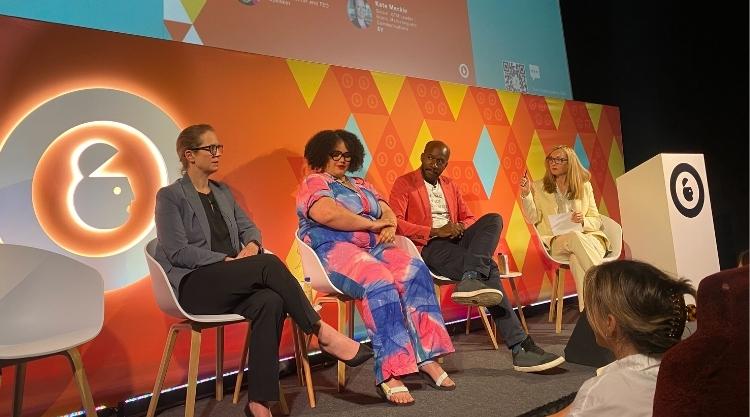Throughout the year, PubMatic hosts numerous global thought-leadership events under our PubAcademy umbrella. Each event offers unique perspectives on relevant industry topics and this year did not disappoint. Our final UK PubAcademy of 2018 included a lively discussion on in-app advertising – a channel lauded as either the wild west or the future of digital, depending on where you sit.
The panel was comprised of John-Paul Burke, Country Manager, UK, Ireland and the Nordics from Gameloft; Matt Slade, Sales Director at InMobi and from the buy-side, Sam Freeman, Senior Programmatic Manager at M&C Saatchi Performance.
Based on the conversations, four key themes and subsequent discussions emerged.
In-App Delivers What Brands Want
In-app is becoming the preferred environment for accessing and consuming content thus it is securing the greatest percentage of all mobile advertising investment according to our research. As a channel, it seems the perfect environment for marketers. According to our panellists, apps bring brands closer to users, offer scale and get them in front of a loyal, more relaxed audience.
Additionally, apps offer a different environment and experience than the desktop. Advertising, particularly in gaming apps, can be built in to the experience, making them less intrusive.
Using first-party data for targeting, strong creatives can be employed that support the consumer experience in an immersive environment. The result is advertisers can reach a highly engaged audience with a tailored experience.
Fraud Is An Issue – Do Your Due Diligence
The major concern for advertisers in these environments is fraud. For display, better mechanics exist to avoid and mitigate fraud, but that should be expected in a more mature channel. Buyers that are not as familiar with buying in-app are often not prepared to take the risk and test the channel.
To do your due diligence and increase trust, advertisers need to remember that there are two environments to access apps – iOS and Android.
iOS is more stringent so it’s harder to get into the App Store. Google has a slightly less stringent approach, coupled with the fact that it’s a bigger opportunity due to the number of devices using Android, makes it an attractive avenue for bad actors who view it as easier route to market.
Ultimately, any environment has its challenges and advertisers should approach in-app with the same rigor as any other channel. Make sure to vet the publishers you’re considering. Are they TAG verified? What third-parties do they work with to address fraud and quality? Have they consent-led traffic? Review the app lists. What are the app reviews like? Basically, ask questions, be mindful and do everything you can to ensure quality. Dip your toe in by starting with publishers you know and by focusing on where you want your advertising to run.
In-App Is A Brand Play – It’s Not Just Performance
Traditionally in-app has been seen as a performance channel, success being measured by an event, such as a download. This direct response focus means for performance advertisers, fraud is reduced. While there may be some exposure to it, if a publisher is not bringing value and driving an action, it will be removed from the campaign. This can help mitigate fraud.
For branding, the focus is often impressing a message on an individual, so a metric such as reach may be important. However, by including an extra metric that is more performance-orientated, such as click-through-rate (CTR), this can act as a marker and help identify campaign success. Hitting your viewability goal is great but if you can understand a little bit more information, you can determine if the location of where your ads are appearing is driving value. This will allow you to optimise to what is delivering value and it helps address fraud.
For in-app, brand and performance are merging. While a brand may demand high viewability and view-through-rates, these can arguably be seen as performance metrics.
What Is Premium For In-App?
In the desktop world ‘premium’ is easy to identify but for in-app, it’s different. For brands, gaming is often not seen as premium. Yet these environments attract loyal audiences that spend a great deal of time in them and it’s not all young males. 63 percent of mobile gamers are female and 60 percent of female mobile gamers play daily compared to 47 percent of male mobile gamers.
If it’s an attractive app and the content is good, it delivers an engaged user. An engaged user will be in a better mindset to do more with your advertising, making them a premium target for a brand. A pre-occupation with the gaming element may make you lose sight of what you’re after – reaching that engaged premium audience.
A good in-app developer focuses on the user, rather than advertisers: without the user they do not have a business. If they are looking after who is in-app and provide a positive experience, this will denote a premium audience. Done well, in-app offers a quality environment delivering good viewability and completion rates that will outperform other environments.
What’s Next for the Future of Digital?
Yes, there are challenges around in-app, but these are being addressed as it becomes the channel of choice for consumers. By being mindful, doing your homework and focusing on quality, it offers a great environment for brands to reach and interact with premium audiences.
To learn more about our mobile offerings, check out our solutions and to see when our next PubAcademies will be (and where) check out our upcoming events.





